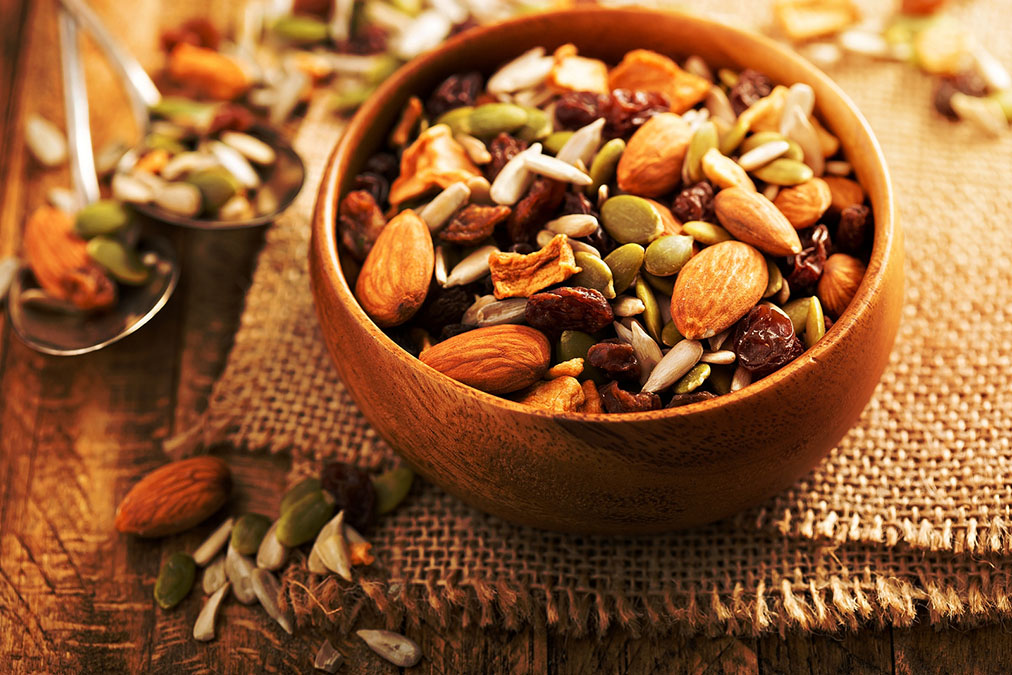 A recent study in the Journal of Agricultural and Food Chemistry discovered an ingredient found in many plants that can drastically improve osteoporosis.
A recent study in the Journal of Agricultural and Food Chemistry discovered an ingredient found in many plants that can drastically improve osteoporosis.
Strangely, however, it’s important to not consume too much of this ingredient. That will eliminate all of the health benefits.
The research team set up an experiment using mice. They induced osteoporosis in these mice using glucocorticoids – a type of steroid.
The mice were then treated with either a low or high dose of phytosterols for four weeks. The low dose was 0.3 mg/mL (milligram per milliliter), and the high dose was 0.5 mg/mL.
After the four weeks, the team checked the bone health of the mice. Here’s where it gets interesting:
-
1. Mice that received the low dose of phytosterols showed improvements in their bone health. Their bone mass increased, the intricate networks (or ‘microstructure’) inside their bones improved, and they had healthier levels of markers of bone health in their blood.
2. Strangely, the mice that received the high dose didn’t show any of these benefits.
To ensure these findings weren’t a fluke, the researchers tested the low dose of phytosterols on another group of mice with osteoporosis induced by another method (ovary removal). They obtained the same results.
The scientists hypothesized that phytosterols exercised their beneficial effects through their influence on gut bacteria. We all have billions of bacteria living in our intestines, playing a role in our health. Some are healthy, while others are known to be harmful.
When they tested the bacteria in the mice’s feces, they found that the phytosterols restored balance in the gut by increasing the number of beneficial bacteria, such as Ruminococcus, and decreasing potentially detrimental species, like Bilophila.
Upon further testing, they noticed that these changes in the gut bacteria were directly linked to the improvements in bone health.
Therefore, a specific dose of phytosterols can improve bone health by balancing our gut bacteria. However, the exact amount seems crucial – too little and there’s no effect, too much, and the benefits disappear.
Phytosterols are natural substances found in plant membranes. They are structurally similar to the cholesterol found in our bodies, but instead of being derived from animal sources, they come from plants.
The healthiest sources of these chemicals are canola oil, almonds, walnuts, pistachios, sunflower seeds, and whole grains.
However, if you consume foods that are artificially fortified with phytosterols, such as margarine, yogurts, and other milk products, you might end up consuming too high a quantity to reap the benefits.
The sweet spot is around 1,500 milligrams of phytosterols per day, which can easily be obtained from normal food sources.

 Overcoming IBD
Overcoming IBD Multiple Sclerosis
Multiple Sclerosis Banishing Bronchitis
Banishing Bronchitis Gum Disease Gone
Gum Disease Gone Overcoming Onychomycosis
Overcoming Onychomycosis Neuropathy No More
Neuropathy No More The Prostate Protocol
The Prostate Protocol Brain Booster
Brain Booster
 Ironbound
Ironbound
 Solution for Shingles
Solution for Shingles
 The Bone Density Solution
The Bone Density Solution
 The Ultimate Healing Protocol
The Ultimate Healing Protocol
 The Parkinson's Protocol
The Parkinson's Protocol
 The Chronic Kidney Disease Solution
The Chronic Kidney Disease Solution
 Overthrowing Anxiety
Overthrowing Anxiety The Fatty Liver Solution
The Fatty Liver Solution The Hypothyroidism Solution
The Hypothyroidism Solution
 The End of Gout
The End of Gout The Blood Pressure Program
The Blood Pressure Program
 The Oxigized Cholesterol Strategy
The Oxigized Cholesterol Strategy
 Stop Snoring And Sleep Apnea Program
Stop Snoring And Sleep Apnea Program
 The Arthritis Strategy
The Arthritis Strategy The Vertigo & Dizziness Program
The Vertigo & Dizziness Program The 3-Step Diabetes Strategy
The 3-Step Diabetes Strategy Hemorrhoids Healing Protocol
Hemorrhoids Healing Protocol The Erectile Dysfunction Master
The Erectile Dysfunction Master Weight Loss Breeze
Weight Loss Breeze The IBS Program
The IBS Program The Insomnia Program
The Insomnia Program The Migraine and Headache Program
The Migraine and Headache Program The Neck Pain Solution
The Neck Pain Solution The Menopause Solution
The Menopause Solution The Ejaculation Master
The Ejaculation Master The TMJ Solution
The TMJ Solution The Acid Reflux Solution
The Acid Reflux Solution The Fibromyalgia Solution
The Fibromyalgia Solution The Psoriasis Strategy
The Psoriasis Strategy